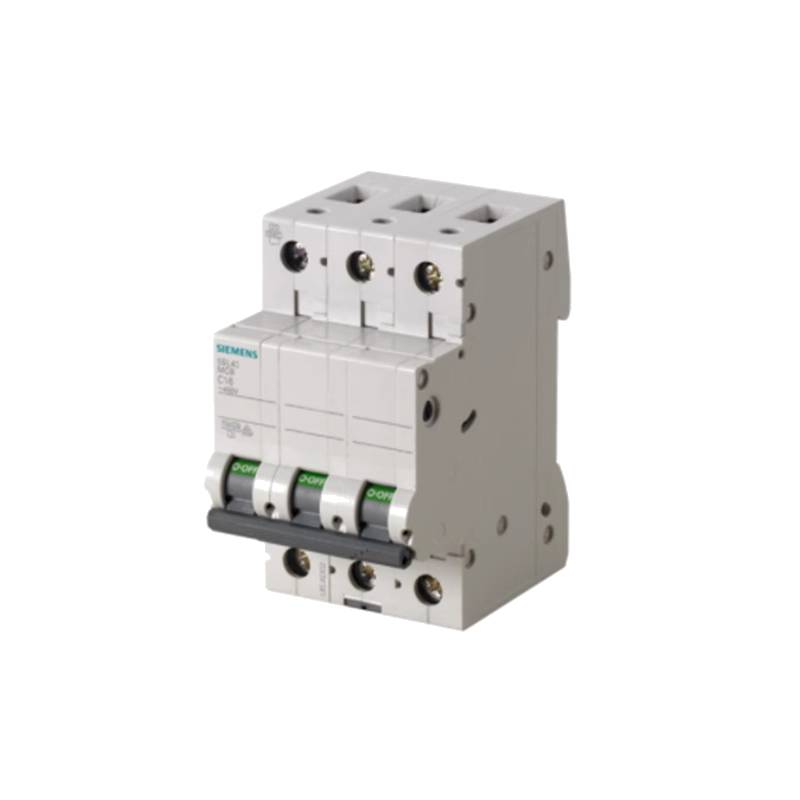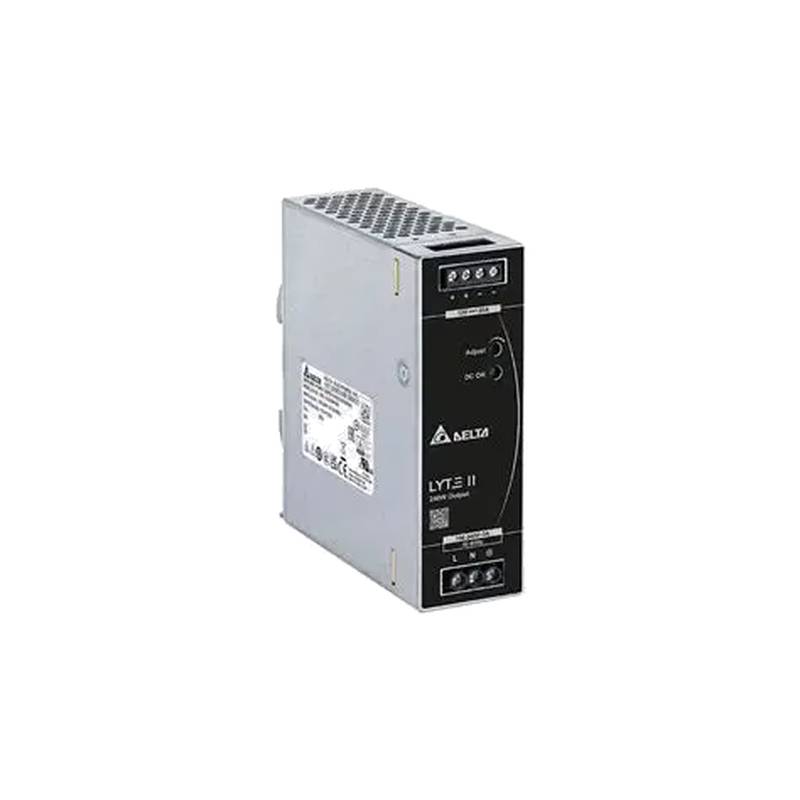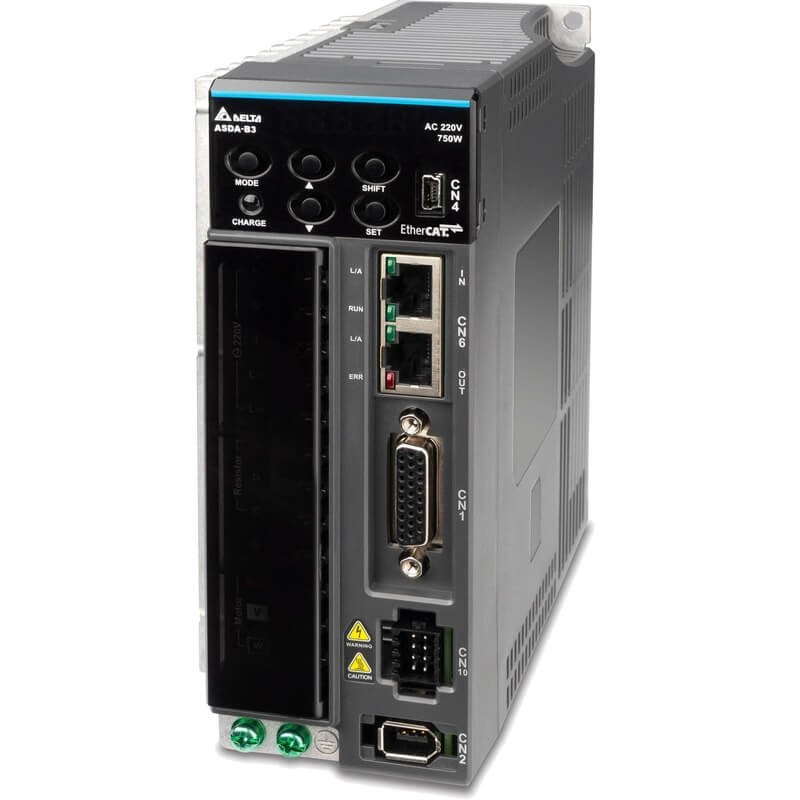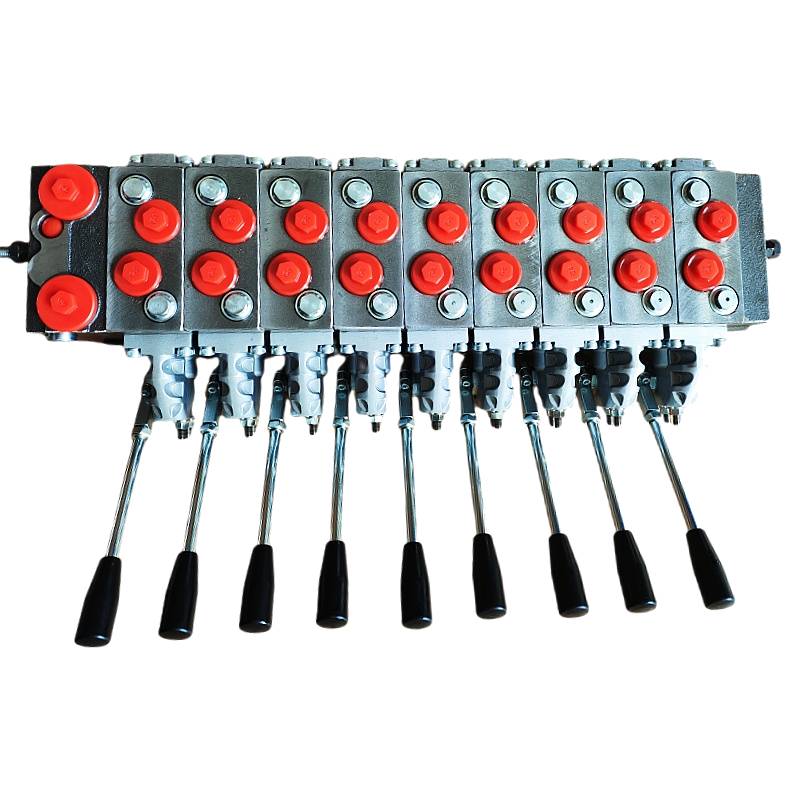
The Siemens 5SN6320-7CN Miniature Circuit Breaker (MCB) is a robust 3-pole (3P) 20A device engineered for reliable power distribution in demanding industrial and commercial environments. This MCB excels in providing essential overcurrent and short-circuit protection, safeguarding electrical circuits and connected equipment from damage. Its key advantages include high breaking capacity, ensuring swift and safe interruption of fault currents, and superior thermal-magnetic tripping mechanisms for consistent performance across a wide temperature range. With a rated insulation voltage of 400V AC and a tripping characteristic of C, it is ideally suited for circuits with moderate inrush currents, such as those found in lighting systems, motor controls, and general power distribution panels.
| Feature | Specification |
| :------------------- | :--------------------------------- |
| Product Type | Miniature Circuit Breaker (MCB) |
| Manufacturer | Siemens |
| Model Number | 5SN6320-7CN |
| Pole Configuration | 3-Pole (3P) |
| Rated Current (In) | 20A |
| Tripping Characteristic | C |
| Rated Voltage (Un) | 400V AC |
| Rated Insulation Voltage (Ui) | 400V AC |
| Breaking Capacity (Icn) | 6 kA |
| Frequency | 50/60 Hz |
| Operating Temperature | -25°C to +45°C |
| Mounting Type | DIN Rail |
| Terminal Type | Screw Terminals |
| Protection Type | Overcurrent, Short-circuit |
Core Features & Market Positioning
The Siemens 5SN6320-7CN stands out in the competitive power distribution market due to its reliable Siemens engineering and adherence to stringent international standards like IEC/EN 60898-1. Its C-curve tripping characteristic is particularly valuable for applications involving inductive loads, such as small motors, fluorescent lighting ballasts, and other equipment that experience temporary high current surges during startup. This feature prevents nuisance tripping while still offering robust protection against sustained overloads and dangerous short circuits. The robust construction and high breaking capacity of 6 kA ensure safety and operational continuity, positioning it as a dependable choice for electricians and system integrators seeking quality and performance in their distribution boards and control panels.
Key Application Scenarios
This 3-pole, 20A MCB is extensively deployed across various industrial sectors and commercial facilities. It is a fundamental component in main distribution boards, sub-distribution panels, and motor control centers (MCCs). Common applications include protecting circuits supplying machinery, HVAC systems, lighting installations, and general power outlets where a 3-pole configuration is necessary for three-phase loads or for switching all three phases simultaneously. Its compatibility with standard DIN rail mounting makes it a versatile solution for new installations and retrofits in control cabinets and electrical enclosures.
Practical System Integration Guidance
Integrating the Siemens 5SN6320-7CN MCB into existing electrical systems is straightforward due to its standard DIN rail mounting capability and screw terminal connections. Ensure that the upstream power supply is de-energized before commencing any installation work. The three input terminals should be connected to the incoming power lines (L1, L2, L3), and the corresponding output terminals will feed the protected load circuits. For optimal safety and performance, it is crucial to verify that the conductor sizes are appropriate for the 20A rating and that all connections are securely tightened to prevent overheating and ensure reliable current transfer. Always adhere to local electrical codes and regulations during installation.
Operation and Risk Mitigation
The primary function of the 5SN6320-7CN MCB is to interrupt the electrical circuit automatically when an overcurrent or short-circuit condition is detected, thereby preventing damage to equipment and mitigating fire hazards. Its thermal tripping mechanism responds to sustained overloads, while the magnetic tripping mechanism reacts instantly to severe short circuits. Understanding the C-curve characteristic is vital; it will trip between 5 to 10 times the rated current. Users should be aware that if the MCB trips repeatedly, it indicates a persistent issue with the circuit, such as an overload or a fault, and requires professional investigation rather than simply resetting the breaker.
Scalability & Long-Term Value
The Siemens 5SN6320-7CN MCB offers excellent long-term value through its compatibility with the broader Siemens SENTRON system and its adherence to international standards, ensuring interoperability with other devices from reputable manufacturers. Its modular design allows for easy replacement or upgrades within standard distribution panels. While this specific model is designed for direct power distribution, its integration into larger Siemens automation platforms or IIoT solutions is facilitated by upstream and downstream components that may offer digital monitoring capabilities. This ensures that facilities can evolve their infrastructure while maintaining a foundation of reliable circuit protection.
Frequently Asked Questions (FAQs)
What is the breaking capacity of the Siemens 5SN6320-7CN MCB?
The Siemens 5SN6320-7CN MCB features a robust breaking capacity of 6 kA. This means it can safely interrupt fault currents up to 6,000 amperes during a short-circuit event. This capacity is critical for ensuring personnel safety and preventing extensive damage to electrical infrastructure in the event of a severe fault.
This high breaking capacity is a key differentiator for industrial applications. It ensures that even under extreme fault conditions, the MCB will reliably de-energize the circuit without causing a dangerous arc flash or explosion. Proper selection based on the expected fault current of the installation is paramount for overall system safety.
Therefore, the 6 kA rating of the 5SN6320-7CN provides a significant safety margin for many common power distribution scenarios. It aligns with typical requirements for commercial buildings and industrial facilities where fault currents can be substantial.
What does the 'C' in the tripping characteristic (C-curve) signify for this breaker?
The 'C' designation signifies a C-curve tripping characteristic, meaning the breaker will trip between 5 to 10 times its rated current (20A). This characteristic is designed for circuits with moderate inrush currents. Examples include loads like fluorescent lighting or small electric motors.
This allows for temporary current surges during equipment startup without causing nuisance tripping. However, it still provides effective protection against sustained overloads and short circuits that exceed these thresholds. It offers a balance between sensitivity and immunity to transient currents.
Selecting a C-curve breaker like the 5SN6320-7CN is crucial for applications where the load's normal operation involves brief, higher current draws. An incorrect curve selection could lead to either false trips or inadequate protection.
Can the Siemens 5SN6320-7CN be used for single-phase applications?
While the 5SN6320-7CN is a 3-pole breaker, it can be used in single-phase applications by only connecting two poles. However, this is generally not the most economical or standard approach for single-phase circuits. Typically, single-phase applications would utilize a 1-pole or 2-pole MCB.
Using a 3-pole breaker for a single-phase load would involve leaving one pole unconnected and ensuring the live conductors are connected to the other two. This setup is more common when a 3-pole breaker is used as a main isolator for a panel feeding various circuits, some of which might be single-phase.
For dedicated single-phase protection, it is recommended to select the appropriate 1-pole or 2-pole MCB from Siemens or another reputable manufacturer to ensure optimal circuit design and cost-effectiveness. This specific model is designed for situations requiring 3-pole switching or protection.

























